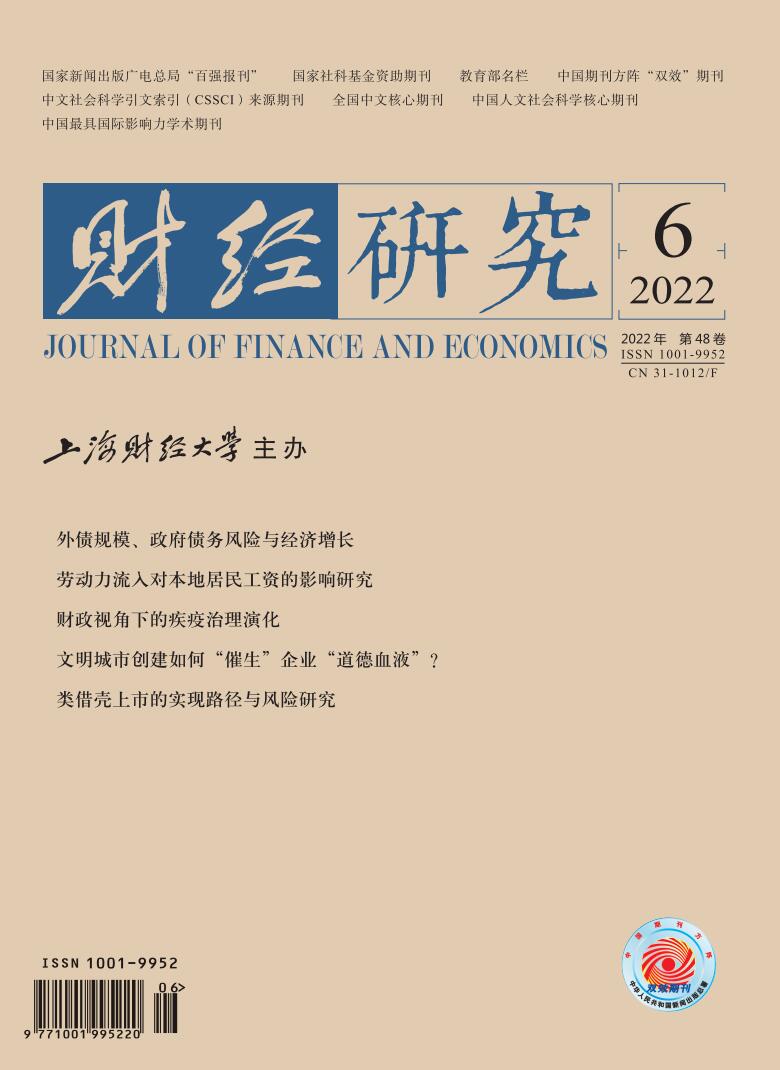通过在信贷配给模型中引入主客观项目成功概率距离这一测算信息不对称程度的指标,文章创新性地构建了解释传统农村金融和数字普惠金融之间关系的理论模型,并提出了相关假说。研究表明:(1)数字普惠金融的发展具有显著的“总量效应”,即促进农村信贷供给总量的边际增加。数字普惠金融的发展显著提高了农户当期消费与持久性收入之间的相关度,并且显著弱化了农户投资对储蓄的依赖性。(2)数字普惠金融对不同阶层的农户具有异质性影响,即存在“结构效应”,且对于弱势农户的融资约束问题具有更强的放松作用。(3)相对于传统农村金融,数字普惠金融在某些方面更具有解决农村金融市场信息不对称问题的能力,两者之间更多地呈现出有效互补而非简单替代关系。上述结论意味着,在数字金融深刻而全面地改变着金融结构和业态的背景下,厘清数字普惠金融和传统农村金融的功能边界,构建两者有机耦合的新型农村金融体系,是新时期对农村金融发展具有重要战略意义的政策选项。
数字普惠金融与传统农村金融:替代抑或互补?——基于农户融资约束放松视角
摘要
参考文献
摘要
关键词
4 黄益平, 邱晗. 大科技信贷: 一个新的信用风险管理框架[J]. 管理世界,2021,(2):12−21. DOI:10.3969/j.issn.1002-5502.2021.02.003
6 刘西川, 黄祖辉, 程恩江. 贫困地区农户的正规信贷需求: 直接识别与经验分析[J]. 金融研究,2009,(4):36−51. DOI:10.3969/j.issn.1674-5477.2009.04.010
10 谢平, 邹传伟. 互联网金融模式研究[J]. 金融研究,2012,(12):11−22. DOI:10.3969/j.issn.1009-4350.2012.12.006
12 姚耀军. 中国农村金融发展状况分析[J]. 财经研究,2006,(4):103−114. DOI:10.3969/j.issn.1001-9952.2006.04.010
21 Beck T, Lu L P, Yang R D. Finance and growth for microenterprises: Evidence from rural China[J]. World Development,2015,67: 38−56. DOI:10.1016/j.worlddev.2014.10.008
22 Bibhunandini D. ICTs adoption for accessing agricultural information: Evidence from Indian agriculture[J]. Agricultural Economics Research Review,2014,27(2): 199−208. DOI:10.5958/0974-0279.2014.00024.X
23 Boucher S R, Carter M R, Guirkinger C. Risk rationing and wealth effects in credit markets: Theory and implications for agricultural development[J]. American Journal of Agricultural Economics,2008,90(2): 409−423. DOI:10.1111/j.1467-8276.2007.01116.x
24 Chen K J, Ren J, Zha T. The nexus of monetary policy and shadow banking in China[J]. American Economic Review,2018,108(12): 3891−3936. DOI:10.1257/aer.20170133
25 Claessens S. Access to financial services: A review of the issues and public policy objectives[J]. World Bank Research Observer,2006,21(2): 207−240. DOI:10.1093/wbro/lkl004
26 Degryse H, Lu L P, Ongena S. Informal or formal financing? Evidence on the co-funding of Chinese firms[J]. Journal of Financial Intermediation,2016,27: 31−50. DOI:10.1016/j.jfi.2016.05.003
27 Ghosh S. Does mobile telephony spur growth? Evidence from Indian States[J]. Telecommunications Policy,2016,40(10-11): 1020−1031. DOI:10.1016/j.telpol.2016.05.009
28 Kashuliza A K. Perception and role of informal rural finance in developing countries: The example of Tanzania[J]. Journal of Rural Studies,1993,9(2): 163−173. DOI:10.1016/0743-0167(93)90029-J
29 Kazianga H, Udry C. Consumption smoothing? Livestock, insurance and drought in rural Burkina Faso[J]. Journal of Development Economics,2006,79(2): 413−446. DOI:10.1016/j.jdeveco.2006.01.011
31 Rauh J D. Investment and financing constraints: Evidence from the funding of corporate pension plans[J]. The Journal of Finance,2006,61(1): 33−71. DOI:10.1111/j.1540-6261.2006.00829.x
32 Roller L H, Waverman L. Telecommunications infrastructure and economic development: A simultaneous approach[J]. American Economic Review,2001,91(4): 909−923. DOI:10.1257/aer.91.4.909
34 Straub S. Informal sector: The credit market channel[J]. Journal of Development Economics,2005,78(2): 299−321. DOI:10.1016/j.jdeveco.2004.09.005
35 Swamy V, Dharani M. Analyzing the agricultural value chain financing: Approaches and tools in India[J]. Agricultural Finance Review,2016,76(2): 211−232. DOI:10.1108/AFR-11-2015-0051
36 Yu J, Fu J S. Credit rationing, innovation, and productivity: Evidence from small- and medium-sized enterprises in China[J]. Economic Modelling,2021,97: 220−230. DOI:10.1016/j.econmod.2021.02.002
引用本文
许月丽, 孙昭君, 李帅. 数字普惠金融与传统农村金融:替代抑或互补?——基于农户融资约束放松视角[J]. 财经研究, 2022, 48(6): 34-48.
导出参考文献,格式为:





 5542
5542  8134
8134

